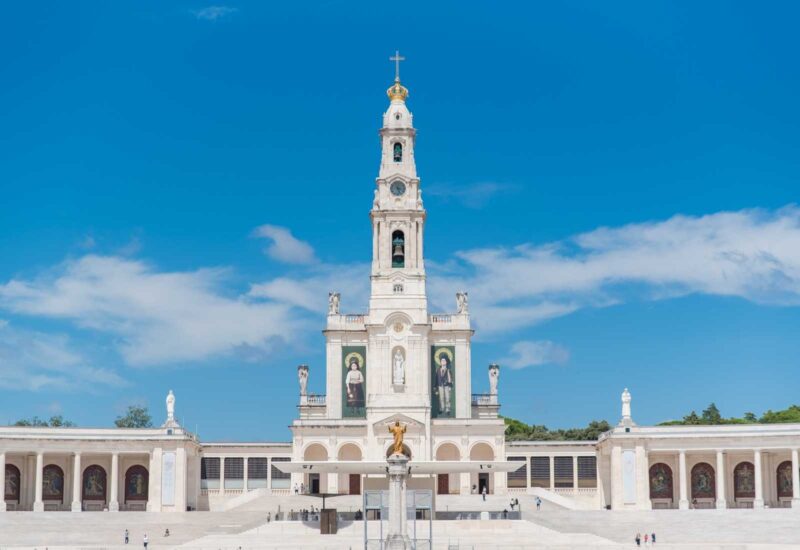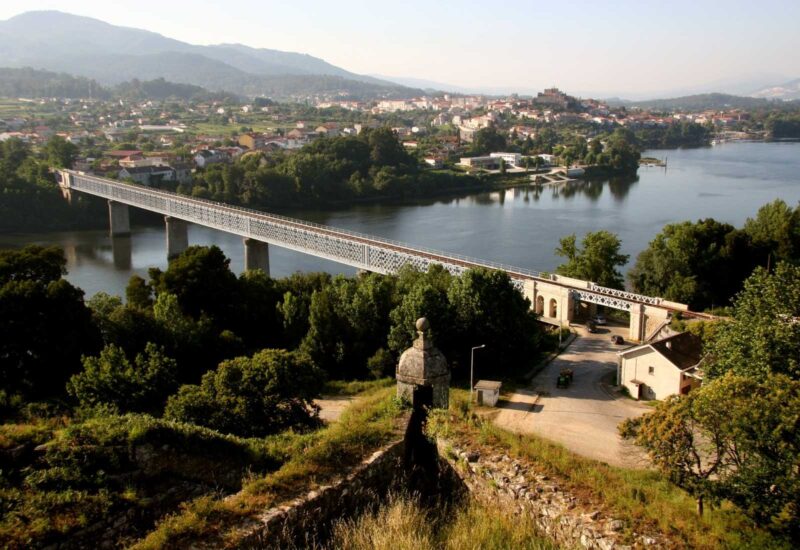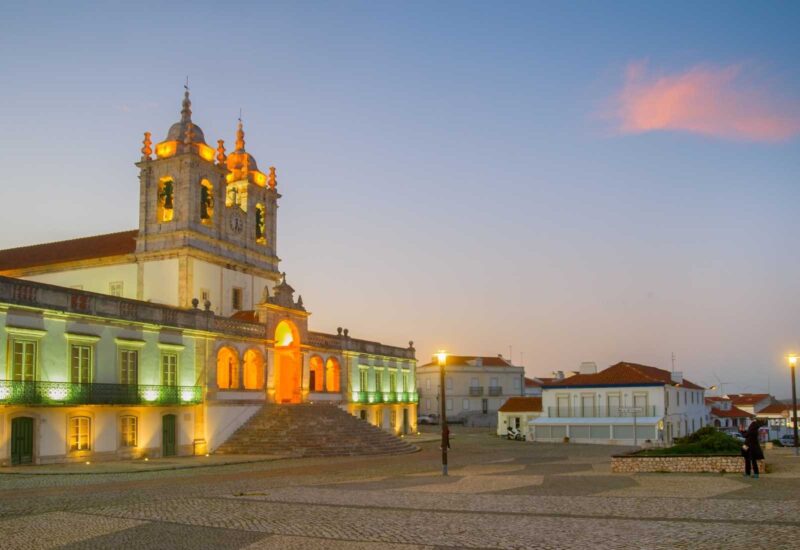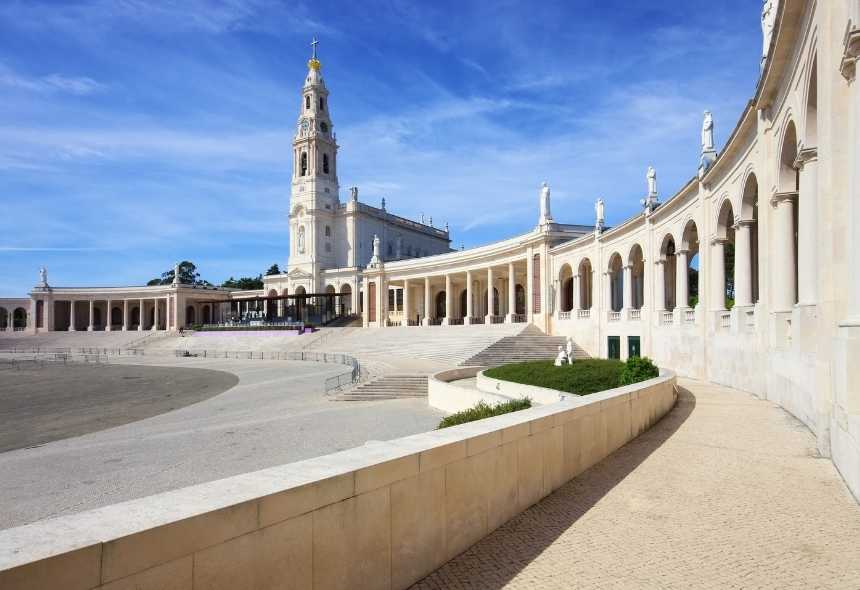The Santuary of Our Lady of the Rosary of Fátima is one of the most important Christian pilgrimage centers in the world, alongside Rome, Jerusalem, and, of course, Santiago de Compostela, with the Camino de Santiago. Located in the center of Portugal, several paths lead to it from different directions, and we can mainly distinguish five paths to Fátima. In this article, we will learn more about the history of Fátima and its pilgrimage paths.
What happened in Fátima?
In 1917, the political situation of Portugal was experiencing a moment of religious tensions, when, after the 1910 revolution, the monarchy was abolished and the republic was proclaimed, along with the ongoing process of secularizing the state at that time.
In the municipality of Ourém, there is Cova da Iria, where the Santuary of Fátima is located, a place where, in 1917, three shepherd children had three episodes of apparitions: the first, an angelic presence; the second, a radiant woman dressed in white; and the third, the so-called “miracle of the sun”. These events received significant media attention and caused much controversy at the time, and perhaps they can be explained by the political context of Portugal.

The Sanctuary of Our Lady of Fátima
Be that as it may, these events were supported by the popes of the time and later ones, who allowed the construction of the Chapel of the Apparitions, the celebration of Masses, and authorized the devotion to the Marian title of Fátima. It was in 1930 when this devotion was officially recognized, and from that moment the pilgrimage to Fátima began to gain momentum and attract pilgrims.
What are the Paths to Fátima?
The Paths to Fátima are a network of religious and cultural itineraries that depart from different locations in Portugal and end at the Sanctuary of Fátima. Developed by the National Centre for Culture of Portugal, with the collaboration of various institutions and the Sanctuary of Fátima itself, they offer safe and pleasant paths for pilgrims heading to the Sanctuary, trying to avoid busy roads and utilizing dirt tracks and small rural paths.
These paths are marked with signs featuring the emblem of the Paths to Fátima (an oak tree and two white crosses on a blue background), distances, and blue arrows, along with the letter “x” indicating the wrong direction. They provide pilgrims with authentic spirituality and a religious experience, along with culture and nature.
There is a standard division of stages, but each pilgrim can modify it, and they usually begin and end at the parish church or an important chapel in the towns they pass through, as religious and culturally significant spaces of the route. In villages, towns, and cities, pilgrims will find all kinds of services and accommodations to ease their pilgrimage. This Marian route can be walked throughout the year, although spring, summer, and autumn offer the best weather conditions.
This pilgrimage, just like the Camino de Santiago, has a credential, issued by the National Centre for Culture, as an identifier and proof of completing this spiritual and personal itinerary. The credential is a booklet that attests to passing through the various stages of the Path to Fátima and must be stamped at each stop during the journey at a parish, hotel, hostel, restaurant, or other institution. It is, like the Compostela, the certificate of completing the Camino de Fátima. It is issued in hostels, churches, and tourist offices in Portugal, with a donation of 2€.
The Different Paths
Currently, there are five paths to Fátima, with different distances and durations, all leading to the Sanctuary from different latitudes of Portugal. These include the Northern Path, the Tagus Path, the Nazaré Path, the Carmelite Route, and the Centenary Path. There are other paths in development, including the Sea Path, the Beira Path, and the Southern Path.
The Northern Path starts from Valença do Miño and reaches Fátima after a total of 364 kilometers divided into 17 stages. It would be somewhat like doing our Portuguese Camino de Santiago in reverse, and in fact, on the Jacobean route, we will see blue arrows pointing south, opposite to the yellow ones that lead north to Santiago. With landscapes of great beauty, important rivers like the Miño and the Douro, and all the Portuguese cultural heritage, this route is very interesting. Here is more information.

The Bridge of Valença do Minho
The Tagus Path starts from Lisbon and reaches Fátima, covering a total of 143 kilometers to be completed in five days. This route crosses a natural and cultural area where the great Tagus River is the main feature, along with the Atlantic coast, which is gradually left behind as you head towards Fátima, in the central region of Portugal. You can learn more by clicking on this link.
The Nazaré Path starts from this city towards Fátima, with a total of 50 kilometers that can be completed in two stages. It begins at the Atlantic coast and heads inland through a mountainous region, where the Sanctuary of Our Lady of Nazaré stands out. A diverse landscape with stunning nature accompanies the pilgrim through rural Portugal. You can learn more at the following link.

The Sanctuary of Our Lady of Nazaré
Two more routes remain, although they are included in the three already described. These are the Carmelite Route, which starts from Coimbra to reach Fátima. It is 111 kilometers long and remembers Sister Lucia, one of the key figures in the Fátima apparition, who entered the Carmelite Convent of Santa Teresa in Coimbra in 1947. The Centenary Path connects Vila Nova de Gaia to Fátima.
A Very Recent Pilgrimage
As you can see, the pilgrimage to Fátima is relatively recent, and it has a history that generated much controversy, even within the Church itself. Whether you are a believer or not, we are convinced that these paths to Fátima have a lot to offer, with the entire Portuguese landscape, great rivers, beautiful cities, and picturesque rural surroundings that, along with the gastronomy and people of Portugal, can provide you with a wonderful pilgrimage experience. As you can see, you can complete them little by little, as there are routes of different distances.
¡Bo caminho, pilgrim!












Is there a route from Santiago DC to Fatima I can study and maybe walk in July ?
Good evening Estelle.
Nice to meet you. There is a Camino that could cover the itinerary you want.
https://viajecaminodesantiago.com/en/pilgrims-around-the-world/camino-fatima/
However, this route is not worked on by our agency. Have a nice day.